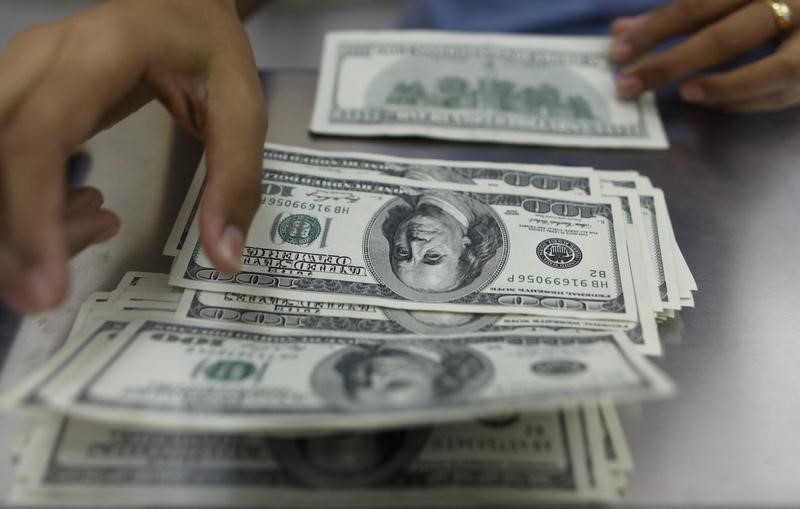Dollar Edges Higher; Sterling Weak After GDP Fall
2022.08.12 10:17

By Peter Nurse
Investing.com – The U.S. dollar edged higher in early European trade Friday, rebounding to a degree after a two-day selloff as weaker than expected inflation data prompted a rethink of the Federal Reserve’s likely tightening path.
At 02:50 ET (06:50 GMT), the Dollar Index, which tracks the greenback against a basket of six other currencies, traded 0.1% higher at 105.045, but still significantly lower than last Friday’s peak of 106.93.
This dollar weakness was caused by Thursday’s data showing U.S. producer prices unexpectedly fell in July a day after the country’s consumer prices came in unchanged, suggesting that inflation pressures in the U.S. were easing.
This resulted in the markets altering their view on the Fed’s super-charged tightening path, considering it more likely that the U.S. central bank will hike interest rates by 50 basis points in September, and not by the 75 bps previously expected.
However, this new position is under threat. Fed policymakers have come out in numbers to warn that the central bank will remain tough despite the slight softening in inflation numbers.
San Francisco Fed President Mary Daly was the latest to comment, stating on Thursday that a 50 bps interest rate hike in September “makes sense”, but that she is open to a bigger rate hike if data warrants.
“It looks too early to expect a significant turn lower in core inflation (rents and wages will stay high),” said analysts at ING in a note, “meaning that core inflation could be back at the 6.5% year-on-year cycle highs as we move into the fourth quarter.”
The resurgence of the dollar has been seen most easily against the Japanese yen, with USD/JPY climbing 0.3% to 133.36 as U.S. Treasury yields bounced off their recent lows.
Elsewhere, GBP/USD fell 0.1% to 1.2203 after data showed that the U.K. economy shrank in the second quarter for the first time in five quarters, but by a fraction less than expected.
Gross domestic product fell 0.1% in the three months through June, a slightly better outcome than the 0.2% expected but a sharp drop from the 0.8% gain posted in the previous quarter.
The Bank of England last week predicted the country’s economy would fall into a prolonged recession at the end of the year, and this release opens the possibility that the recession could come sooner.
EUR/USD traded largely flat at 1.0316, with the single currency struggling to make any gains given the difficulties the Eurozone’s economy is having to battle.
“In addition to the Russian threat from energy prices, the European manufacturing industry now has to contend with drought conditions and low water levels on the Rhine,” added ING. “That will challenge coal shipments, amongst other cargoes, and is keeping European natural gas prices bid near the highs. This factor remains an outright euro negative.”








